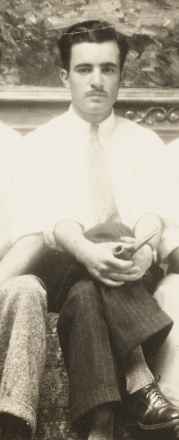Antonio Martino (1902 - 1988) Works

Antonio Pietro Martino (1902 - 1988)
Antonio Martino was one of seven brothers and a sister, all of whom were artists. His father was a mason and stonecutter, and his mother had emigrated from Italy to Philadelphia. He began his studies at the Graphic Sketch Club in Philadelphia. Later he took weekend courses at the Spring Garden Institute and the La France Art Institute while being enrolled full time at the Pennsylvania Museum School of Industrial Art.
In 1941, he and his brother Frank started the Martino Studios, a successful commercial art and design business. All of the Martino brothers participated in the business, which had a staff of twenty artists. Martino’s talents were recognized when he was in his late teens, and by his early twenties, his career had begun to flourish. In 1926, he was the youngest artist to win a medal at the Sesquicentennial Exposition in Philadelphia.
Martino started out painting impressionist landscapes in and around New Hope area. Using a very thick impasto with a heavy impressionist style, his earliest work (1924-1929) was similar to that of Edward Redfield and Walter Schofield. In the latter 1920s and into the 1930s, Martino’s work began to evolve. It still remained impressionist in style, but the brush strokes broadened and the paint application became lighter. He often painted in Gloucester during the summer in the late 1920s and early 1930s. Towards the late 1930s and through the 1940s, his style began to move slightly towards the modernist and his subjects seem focused primarily on the Philadelphia neighborhood of Manayunk. These pictures have a desolate eerie feeling, similarly found in the work of Edward Hopper. Martino was also an accomplished watercolorist.
His work output was high and somewhat uneven. Martino’s earliest work is most commonly admired by collectors and critics, therefore commanding by far the highest values. In 1971, Martino moved to California where he continued to paint modernist coastal scenes and landscapes as well as still life subjects until the end of his life in 1988.
At the National Academy of Design, he won five prizes, including a Gold Medal. The National Academy made him an Associate in 1938 and an Academician in 1942. He also exhibited at the Philadelphia Art Club, the Art Institute of Chicago, the Pennsylvania Academy of the Fine Arts, the Philadelphia Sketch Club, the Corcoran Gallery Biennials, the Carnegie Institute, the National Arts Club, the Salmagundi Club and the Whitney Museum of American Art. During his distinguished career, he earned over eighty awards, had more than ten solo exhibitions and is permanently represented in more than twenty-five public collections.
Source: New Hope for American Art by James Alterman
Photo Source: Giovanni Martino and Martino family papers, 1913-2013. Archives of American Art, Smithsonian Institution

